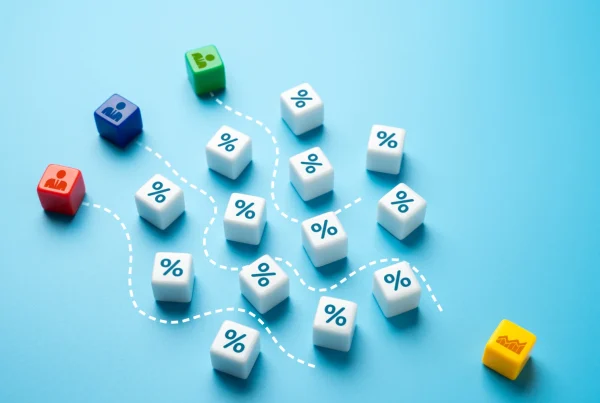Demand planning is one of the most critical components of retail management. It enables retailers to manage operations without any hurdles. Why is demand planning important for retailers? What demand planning methods should they adopt? How can retailers be successful demand planners? How do you set up demand planning software for your business? Find answers to all your questions below. Let’s get started!
What is Demand Planning?
Demand planning uses data to balance consumer demand management with supply. This practice enables companies to manage their inventory operations, also making sure they’re earning better profits. It balances inventory and shapes demand; enabling retailers to manage unsold stock through regular marketing and promotions.
Additionally, demand planning software enables retailers to cut the instances of mismatched inventory. This equips them with a well-constructed plan to move ahead without worrying about bottleneck situations like demand disruptions.
Why is Demand Planning Important for Retailers?
Trust serves as the foundational element in maintaining and enhancing customer loyalty. Consider the scenario when a company launches a product. It meets your customers’ preferences and needs. The imperative next step is to guarantee its consistent availability in your inventory. This raises an essential question–How can retailers manage and predict the demand for distinct SKUs? The strategic answer to this challenge is demand planning. It aligns inventory with consumer demand.
Demand Forecasting and Demand Planning Objectives
Use demand planning to ensure that your objectives are always met. It addresses consumer demand and manages operations. Let’s discuss it in details:
- The main goal is to have products available to keep sales and revenue steady. Customer trust is crucial. It hinges on a retailer’s ability to meet demand without running out of stock; demand planning is key. It makes sure retailers have the right amount of inventory to meet customer orders. This part of demand planning is about matching inventory levels with expected demand. The goal is to keep sales and revenue on track.
- The second aim deals with operational efficiency. It enables inventory management and ensures efficient use of physical space. Maintaining unnecessary space often leads to overstocking. This may create a need for a product clearance at a discounted price. Demand planning ensures that retailers take proactive steps to resolve such situations.
Demand planning makes it easy for retailers to handle economic shifts. It also enables them to get ready for global emergencies and climate change. Given these uncertainties, achieving accurate demand forecasts has become more crucial than ever. Through effective demand planning, businesses navigate these uncertainties in a better way. Adapting to changing conditions, and maintaining a competitive edge requires efficient inventory management.
💡Fact
Did you know human error is a top issue in 46% of warehouses?
Benefits of Demand Planning
1. Maximize Excess Storage Cost for Effective Demand Planning
Demand planning plays a crucial role in optimizing inventory levels. This enables retailers to cut excess storage costs. This situation arises when a company holds more inventory than it needs to meet demand. This leads to wasted space, and higher spoilage rates for perishable goods.
2. Increase Production Accuracy with Demand Planning and Forecasting
Retailers need to deploy advanced analytics and optimization techniques. A big shift from traditional forecasting methods. These include operations research methodologies, linear programming, simulation models and stochastic optimization.
Such methodologies identify possible scenarios and constraints, enabling retailers to identify the effective production schedules and logistics plans. For instance, stochastic optimization techniques account for the uncertainty in demand forecasts, allowing companies to create strong strategies that reduce risk and improve operational stability.
3. Improve Exception Management
Demand planning elevates exception management. From a reactive firefighting approach to a proactive, strategic process. These advanced statistical forecasting models track through a wide array of data. Involving historical sales, market trends, and external factors. This enables businesses to gain the foresight to expect potential disruptions. Predictive tools spot spikes in demand or inventory shortages before-hand. Allowing companies to tweak their strategies in time. Real-time data analytics further support this by providing continuous monitoring against forecasts. This detects and resolves any abnormalities. Furthermore, reduces the risk and impact of potential issues on finances and performance.
4. Enhance Resource Allocation
Demand planning facilitates dynamic resource change. This modification is in response to market changes or demand fluctuations. Ensuring that the allocation of resources remains optimal over time. Advanced analytics and real-time monitoring enable businesses to adapt their resource allocation strategies. This maximizes operational efficiency and competitiveness.
Demand Planning Process Explained
1. Data Collection and Analysis for Demand Forecast
The foundation of effective demand planning is the collection and analysis of data. This includes historical sales data, inventory levels, and market trends. Additionally, external factors, such as economic indicators and competitor analysis. Advanced analytics and statistical methods cleanses, processes, and analyzes data. Furthermore, provides insights into past performance and potential future trends.
The next step is to forecast future demand. Statistical models and algorithms use the collected data to complete this task. It involves different forecasting methodologies. Qualitative techniques like market research. And quantitative approaches like time series analysis or regression models. The goal is to create an accurate forecast. This forecast considers seasonal fluctuations, market dynamics, and promotional activities.
2. Collaborative Planning
Demand planning involves collaboration across different departments within an organization. This includes sales, marketing, finance, and operations. It ensures that the demand forecast aligns with business goals and market strategies. Additionally, the involvement of suppliers and distributors is also possible. Such collaborative planning ensures adequate alignment of the entire operations.
3. Inventory Optimization
Businesses adjust their inventory levels based on the demand forecast. This maximizes chances of meeting predicted demand without incurring unnecessary holding costs. Demand planning determines optimal stock levels, reorder points, and safety stock levels.
4. Production and Supply Planning
Businesses use future demand analysis to plan their production schedules and inventory activities. This includes decisions about manufacturing processes and sourcing raw materials. Additionally, allocating resources to meet forecasted demand.
5. Implementation and Execution
This process involves coordinating production, managing inventory, and aligning distribution and logistics operations. It ensures that products are available to meet customer demand as forecasted.
6. Continuous Monitoring and Improvisation
Demand planning is a dynamic process that requires ongoing monitoring. Companies should keep a check on actual sales against demand forecasts. Improvising plans according to the changes in market conditions or deviations in performance. This iterative process allows for continuous improvement in forecasting accuracy and operation efficiency.
Demand Planning Methods Explained
Demand planning employs a range of methods to forecast demand and align operations. These methods blend qualitative and quantitative insights to provide accurate predictions. Below are five key methods used in demand planning.
Seeking Expert Opinion
This method relies on the knowledge and experience of internal or external experts. It is a qualitative method. It’s particularly useful for new products or markets where historical data IS unavailable. Experts use their understanding of industry trends, market conditions, and consumer behavior. This enables them to provide insights into projected demand. Structured interviews or discussions formalize it.
Market Research
It involves gathering and analyzing data from the market or potential customers. Businesses analyze buying intentions and preferences to conclude the approach. Surveys, focus groups and customer interviews collect such primary data. This method identifies trends. It also identifies customer needs and potential demand for new products or features. It is invaluable for demand planning.
Time Series Analysis for Future Demand
This method uses historical sales data to predict future demand. It is a quantitative method that identifies patterns and trends over time. Time series analysis looks at seasonal changes, trends, and patterns in data. It uses models like moving averages, exponential smoothing, and Autoregressive Integrated Moving Average. Data drives this approach. It assumes that past patterns will repeat in the future.
Causal Models
Causal models forecast demand by linking it to the economy, marketing, price shifts, and competition. Planners often use regression analysis in these models. This technique measures how different factors impact demand. This method helps in seeing how outside changes might influence future demand. It makes it easier to plan for what customers might want next.
Machine Learning and AI
Machine Learning and AI use advanced analytics to analyze big data sets. They find complex links between factors that influence demand. These models learn from past data and get better at spotting new trends. They manage detailed data and complex patterns. This makes them great for handling changing and complicated demand. AI in demand planning automates forecasts. It offers insights in real-time, and spots trends that usual methods fail to catch.
Future of Demand Planning
Demand planning is key for retail success. It mixes old methods with new AI and machine learning tech. This way, it predicts demand well and matches inventory to market needs. Furthermore, it ensures smooth operations and happy customers. They stay competitive. Good demand planning means right inventory levels, lower costs, and higher profits. Use these methods to make your retail operations better and more profitable.
Take the Next Step
As you move forward, device data-driven strategies, keep consumers happy and improve profits.
Anticipate market shifts with precision through proactive demand planning. Take advantage of advanced machine learning algorithms to generate precise forecasts for every SKU, at any store, style, or hierarchy level, and throughout every lifecycle.
Frequently Asked Questions
What is demand planning?
Demand planning is key in supply chain management. It predicts future customer demand. This happens by looking at sales history, market trends, and how customers act. It enables businesses to make better strategies and drive better ROI for their business.
What are the benefits of demand planning?
The benefits of demand planning include improved inventory management. It enables businesses to reduce stockouts and excess inventory, enhanced production, and distribution efficiency. Additionally, ensures timely product availability, and optimized procurement processes.
What are demand planning methods?
Demand planning uses several methods. One–historical data analysis, where past sales trends guide future forecasts. Another is market analysis, which considers market trends and consumer behavior. The Delphi method gathers expert opinions for forecasting. Statistical methods use algorithms to predict demand. Finally, collaborative planning involves sharing information across departments to improve accuracy.





